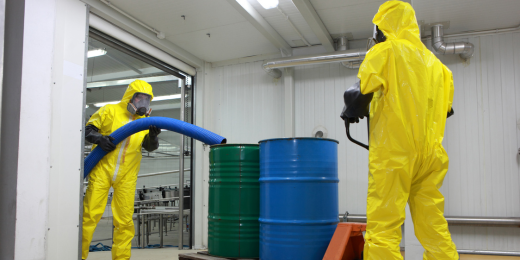The Single Strategy To Use For Reclaim Waste
The Single Strategy To Use For Reclaim Waste
Blog Article
Examine This Report on Reclaim Waste
Table of ContentsSome Of Reclaim Waste9 Easy Facts About Reclaim Waste ExplainedReclaim Waste Things To Know Before You Get This5 Simple Techniques For Reclaim WasteWhat Does Reclaim Waste Do?
Domestic sewage waste refers to the waste and products from a domestic septic tank. The proper monitoring and disposal of domestic sewer waste call for liquid waste to be transferred to a sewer therapy plant where the appropriate approaches and tools are used to cleanse and dispose of waste.
Commercial waste commonly consists of potential dangers, such as combustible materials or a combination of fluid and solid waste items, and calls for an advanced and comprehensive disposal process. The disposal of business waste typically involves the purification of waste prior to transport to ensure risk-free and correct disposal. Industrial waste is created from byproducts and overflow of industrial processes and manufacturing.
This type of waste can not utilize the very same sewer monitoring transport or processes as septic or industrial liquids. The commercial waste management process needs the assessment and testing of fluid waste before it goes through the disposal process (liquid waste disposal melbourne). Drainage waste is the liquid waste that comes from runoff and excess stormwater in highly populated areas or cities
Overflow waste can cause contamination and flooding if not handled properly. Making certain correct waste administration can avoid disasters and minimize environmental injury.
Reclaim Waste for Dummies
Get in touch with PROS Services today to discover our waste management and disposal solutions and the proper means to take care of the fluid waste you produce.
(https://www.domestika.org/en/reclaimwaste1)This supposed 'wastewater' is not only an essential resource yet, after treatment, will be released to our land, waterways or the ocean. Utilized water from bathrooms, showers, baths, kitchen sinks, laundries and commercial procedures is understood as wastewater.

water made use of to cool down machinery or clean plant and tools). Stormwater, a kind of wastewater, is overflow that streams from farming and metropolitan locations such as roofing systems, parks, gardens, roadways, paths and seamless gutters right into stormwater drains, after rain. Stormwater flows unattended directly to regional creeks or rivers, at some point getting to the sea.
Reclaim Waste for Beginners
In Queensland, many wastewater is treated at sewage therapy plants. Wastewater is moved from residential or industrial sites with a system of sewers and pump terminals, known as sewerage reticulation, to a sewer therapy plant.
The Department of Natural Resources recommends city governments about handling, operating and maintaining sewage systems and treatment plants. In unsewered locations, regional federal governments may need homeowners to install specific or family sewer therapy systems to treat residential wastewater from toilets, kitchens, shower rooms and laundries. The Division of Natural Resources authorises using home systems when they are shown to be reliable.
The majority of stormwater gets no treatment. In some new communities, therapy of some stormwater to eliminate clutter, sand and crushed rock has started using gross pollutant catches. Wastewater therapy occurs in four phases: Eliminates strong issue. Larger solids, such as plastics and various other objects original site mistakenly released to sewage systems, are eliminated when wastewater is travelled through displays.
Wastewater then moves into huge storage tanks where solids work out and are gotten rid of as sludge. Grease and residue are skimmed from the surface. Uses small living organisms referred to as micro-organisms to break down and get rid of remaining liquified wastes and great particles. Micro-organisms and wastes are integrated in the sludge. Gets rid of nitrogen and phosphorus nutrients that could trigger algal flowers in our rivers and threaten marine life.
The smart Trick of Reclaim Waste That Nobody is Talking About
Nutrient elimination is not offered at all sewage treatment plants due to the fact that it needs pricey specialised equipment. It is ending up being more usual in Queensland. Clear fluid effluent created after therapy may still contain disease-causing micro-organisms. If this effluent is released right into rivers such as rivers or the sea, the micro-organisms will eventually pass away out.

The majority of wastewater streams right into the sewerage system. Under the Act, regional governments provide authorizations and licences for environmentally appropriate activities (ERAs) involving wastewater launches that might have a regional influence.
3 Simple Techniques For Reclaim Waste
Monitoring gives accurate info regarding water quality and can verify that permit conditions are being fulfilled. The information obtained with monitoring provides the basis for making water top quality decisions.
Report this page